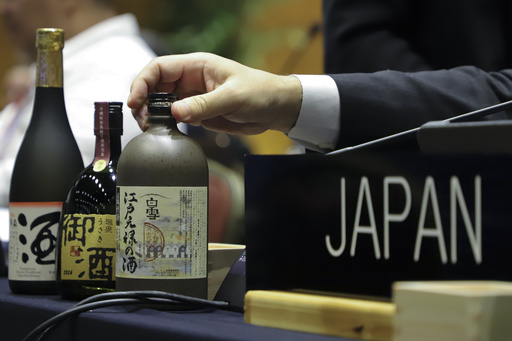LUQUE, Paraguay — Sake, often regarded as a true embodiment of Japanese culture, holds a significant place within Japan’s rich culinary heritage. This traditional rice wine is produced in centuries-old storages atop mountains, enjoyed in local izakayas, and is customarily served during weddings and other special gatherings, often chilled for celebratory toasts.
On Wednesday, UNESCO recognized sake as part of its “intangible cultural heritage of humanity,” during a meeting in Luque, Paraguay. The committee took a momentous step in honoring 45 distinct cultural practices and items from across the globe, which also included Brazilian white cheese, Caribbean cassava bread, and Palestinian olive oil soap.
Unlike the World Heritage List—which highlights significant sites like the Pyramids of Giza—the Intangible Cultural Heritage designation focuses on specific cultural products and practices that merit acknowledgment for their historical and social importance.
A Japanese delegation celebrated this recognition, with Kano Takehiro, the Japanese ambassador to UNESCO, expressing that “sake is viewed as a divine gift fundamental to social and cultural gatherings in Japan.” The traditional ingredients for making sake are simplistic, comprising just rice, water, yeast, and koji, which is a rice mold that transforms starch into fermentable sugars, akin to the malting process in beer creation. The extensive process of steaming, fermenting, and pressing typically spans two months and can be labor-intensive.
The rice, which plays a vital role in Japan’s cultural identity, is crucial for producing sake; only rice cultivated in Japan can classify as Japanese sake. The commendation from UNESCO honors not merely the craftsmanship involved in producing high-quality sake but also a millennium-old tradition intertwined with Japan’s history, as sake was referenced in the classic 11th-century literary work, “The Tale of Genji,” where it served as the beverage of choice among the elite in the Heian court.
Japanese officials are optimistic that this acknowledgment will help elevate the stature of sake, especially given the trend among younger consumers gravitating towards imported wines and local beers or whiskeys. Takehiro remarked that the UNESCO designation holds considerable significance, stating, “This will contribute to revitalizing interest in the traditional sake brewing process.”
Moreover, with the global surge in sake’s popularity—particularly in the United States—Japanese breweries are hopeful that this recognition could bolster the nation’s export market. Presently, sake exports, predominantly directed toward the U.S. and China, yield over $265 million annually, as reported by the Japan Sake and Shochu Makers Association.
On Wednesday, the Japanese delegation appeared poised to celebrate this milestone in true cultural fashion. Following the announcement, Takehiro lifted a cypress box brimming with sake to toast not only the beverage itself but the rich cultural significance it embodies.


